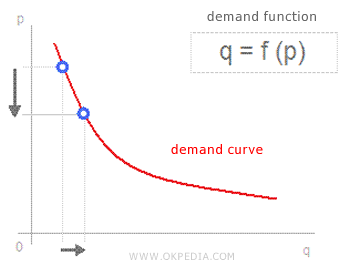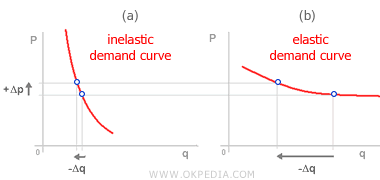Market Demand
Market demand is the quantity of a good that consumers are willing to buy at a specific price. It's one of the main drivers in the marketplace. Market demand is the total of all the quantities demanded by every buyer at each price point. This is also known as aggregate demand. Market demand highlights the relationship between the quantity demanded of a good and its price, holding constant all other economic factors that influence consumer choices (e.g., income, prices of substitutes, preferences, the number of consumers and businesses in the market, etc.). This relationship can be illustrated on a graph.

The quantity demanded of a good is inversely related to its price. This means the demand curve slopes downward: as the price increases, the quantity demanded by the market decreases. The market demand curve is the horizontal sum of all consumers' individual demand curves and shows how much of a good people are willing to buy at different price levels. The slope of the demand curve depends on how easily consumers can switch to a substitute when the price of the good rises. For goods that are hard to replace (e.g., gasoline), the demand curve is inelastic, steep, and nearly vertical. For goods that can be easily substituted (e.g., detergent), the demand curve is elastic and more horizontal.

The diagram above illustrates two types of demand curves. In diagram (a), the demand curve is inelastic, while in diagram (b), the curve is elastic. As you can see, the same price increase (+p) causes a small drop in the quantity demanded (-q) in case (a), since the good has few substitutes (e.g., gasoline). In case (b), where the good can be easily replaced (e.g., detergent), the quantity demanded decreases significantly. The convex shape of demand curves results from analyzing the price-consumption curve, which shows the optimal baskets of two goods, x and y, that a consumer chooses as the price of one of them changes (see construction of the demand curve).
 Difference Between Individual Demand and Market Demand. Individual demand and market demand are distinct concepts. Individual demand refers to the quantity of a good a single consumer is willing to buy as the price changes. Market demand, by contrast, refers to the total quantity of a good that all consumers are willing to buy at varying prices. In the case of individual demand, a change in price only affects the quantity demanded by one consumer. With market demand, both the quantity demanded and the number of participants in the market change. For example, when the market price rises, some consumers with a lower reservation price will stop buying the good. Conversely, when the price drops, new consumers will enter the market and add to the overall demand.
Difference Between Individual Demand and Market Demand. Individual demand and market demand are distinct concepts. Individual demand refers to the quantity of a good a single consumer is willing to buy as the price changes. Market demand, by contrast, refers to the total quantity of a good that all consumers are willing to buy at varying prices. In the case of individual demand, a change in price only affects the quantity demanded by one consumer. With market demand, both the quantity demanded and the number of participants in the market change. For example, when the market price rises, some consumers with a lower reservation price will stop buying the good. Conversely, when the price drops, new consumers will enter the market and add to the overall demand.
